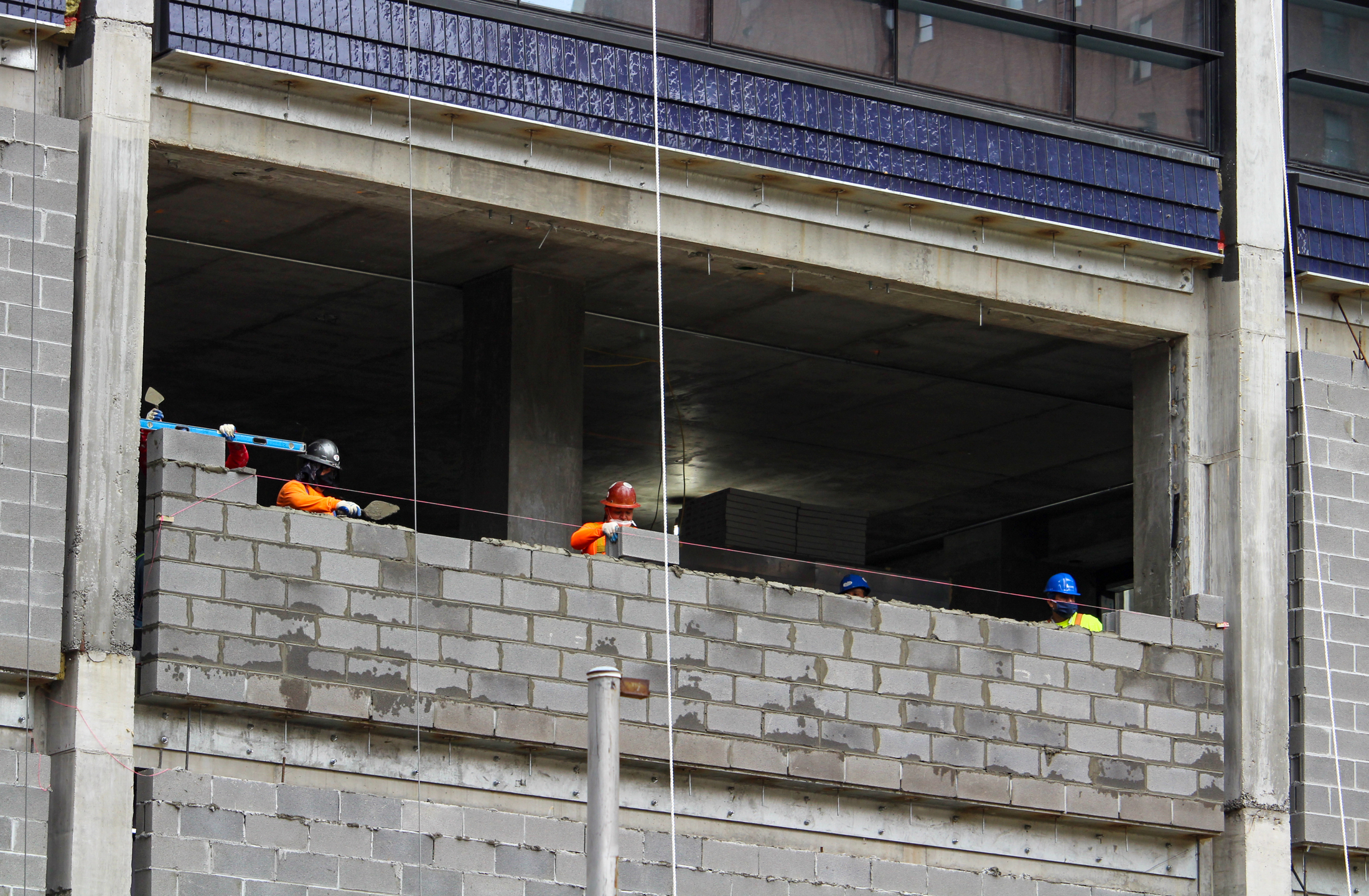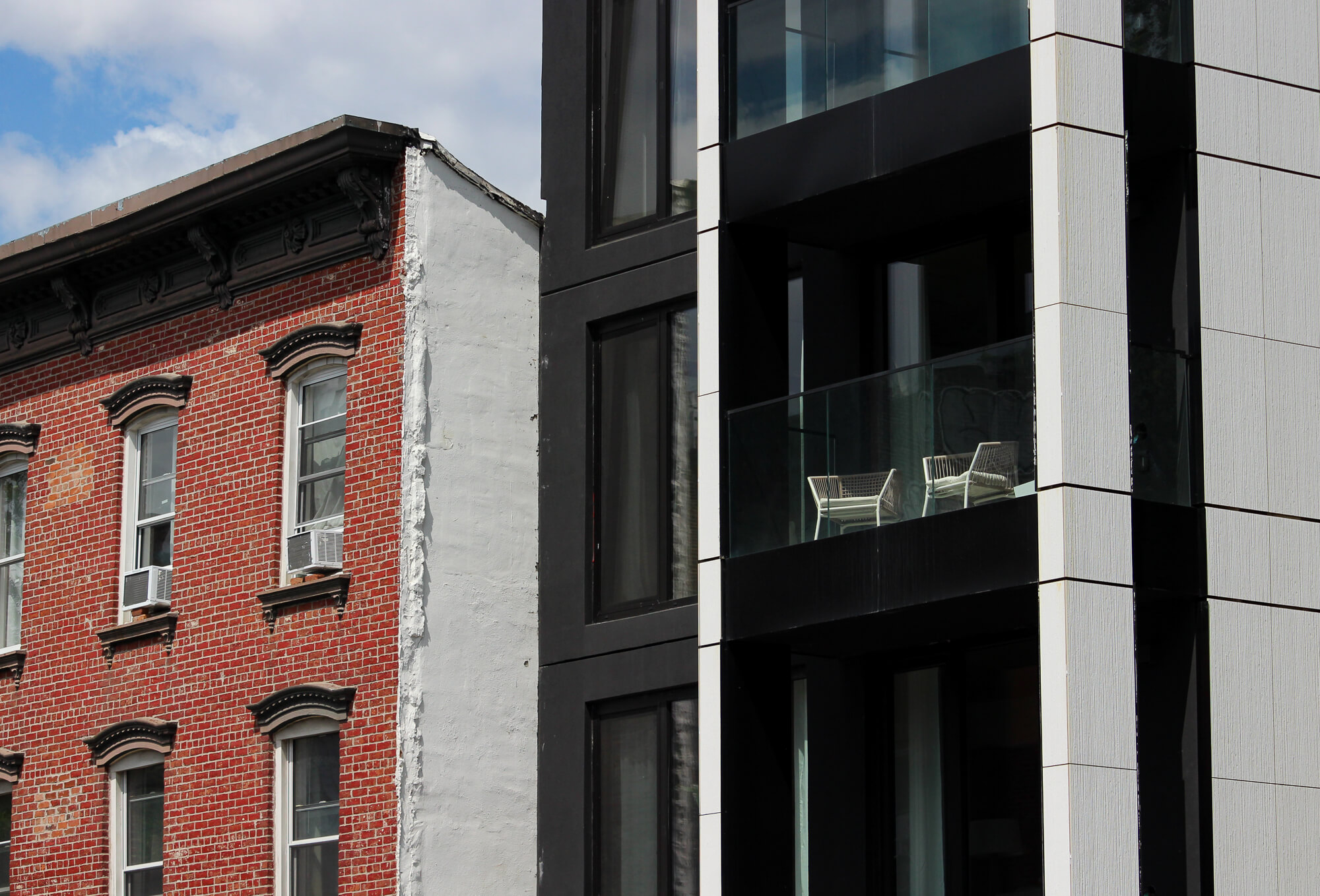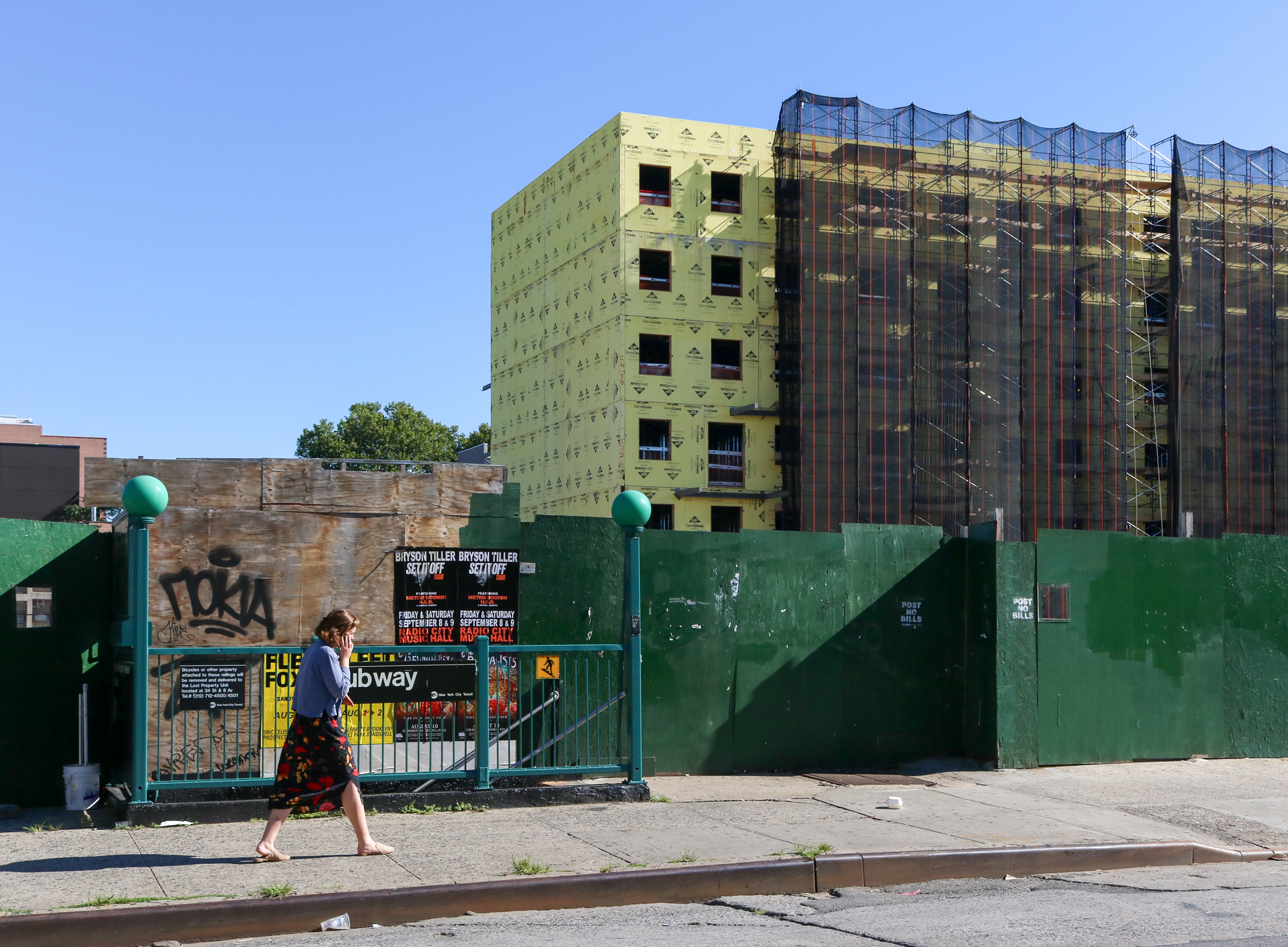Support, Skepticism at Hearing on Exempting 250-Unit Developments From Environmental Review
A change to city rules that would allow certain residential developments to be built without going through the city’s environmental review process was largely met with support at a public hearing.

A new development rising in Clinton Hill in 2022. Photo by Susan De Vries
A change to city rules that would allow up to 250-unit, 250-foot-tall residential developments to be built without going through the city’s environmental review process was largely met with support at a public hearing Wednesday. However, Brooklyn was heavily represented in those who spoke against the proposal, with speakers saying the change would weaken community input in development.
Six of the 19 people who spoke at the City Planning Commission hearing on the Green Fast Track for Housing rule – pitched by the city to cut costs and delays for developers, while requiring the use of electric power – raised fears about a loss of public consultation in the development process and the sidelining of possible environmental issues. Five of those speakers said they live in Brooklyn.
“We oppose the amendment because it would further disempower the community from ensuring that the development projects disclose harmful situations that their project can produce and force developers in the city to upgrade our infrastructure to accommodate new development,” Brooklyn local Alicia Boyd told the commissioners.
Fellow Brooklyn resident LaShaun Ellis said “throwing the word green in front of any plan will make it acceptable and people will love it, lest they be labeled anti environmentalist.”
“Let’s not forget that all electric heating is not environmentally friendly and 60 percent of electricity is generated by fossil fuels,” she added, saying New York City needed better regulation for development, not less.

The Green Fast Track for Housing, currently going through the city’s rule change process, would add a new type II category (a list of exemptions) to the City Environmental Quality Review, exempting housing developments up to a certain size from review under city and state environmental procedures. Currently, any new development that is not as-of-right or already exempt is required to go through the environmental review process. Projects requiring a rezoning must go through environmental review, for example.
In areas zoned R1 to R4, applicable developments could have up to 175 units and 20,000 square feet of non-residential space. In areas zoned R5 to R10, developments could have up to 250 units and 35,000 square feet of space for non-residential use. In both cases, the new building would have to be less than 250 feet tall, or less than 50 feet tall if it is next to open space, natural resources, or historic resources that are sunlight sensitive.
Projects of that size are deemed by the four agencies behind the proposal – Department of City Planning, Office of the Mayor, Department of Housing Preservation and Development, and the Board of Standards and Appeals – to have a low risk of significant adverse environmental impacts.
“Based on this analysis of past environmental reviews, the commission has concluded that housing developments of up to 250 new units in higher and medium density districts and up to 175 new units in lower density districts that meet certain other density-related and site-specific criteria do not result in significant adverse impacts,” Department of City Planning says in its rule change application.
Department of City Planning’s Stephen Everett presented the proposed rule change at the public hearing, saying it is being done in response to the city’s housing crisis and is aimed at getting more houses built that have a low risk of adverse environmental impacts.

Everett said the rule change would still maintain “the robust public review processes we have today,” adding criteria to be considered a type II project is “robust.” Projects would still be regulated by their zoning, the Landmarks law, and the Department of Building permitting process, he added.
“Projects could also not be located in specifically environmentally sensitive areas, such as near industrial sources of pollution, adjacent to arterial highways, or in special coastal risk districts.”
He said the criteria, including the size and site specific requirements, for type II designation are “based on sound research.”
In its application for the rule change, the Department of City Planning said the preparation of an Environmental Assessment Statement, the first step of City Environmental Quality Review, costs developers more than $100,000, can take six to eight months, and in many cases is unnecessary. In a December press release announcing the proposed rule change, the mayor said it will save developers up to two years.
Louis Cespedes, who told commissioners he works in construction (specifically new building permitting for multi-family developments) and has expertise in local law 97, said what bothers him about the proposal is “EIS would be circumvented and would deny communities the opportunity for transparency and to comment on developments happening in their community.”
“The Green Fast Track initiative would have a direct impact, not on high density neighborhoods in Manhattan, but on low density and low income and predominantly minority neighborhoods in the boroughs,” he said.
Cespedes said getting rid of community input and environmental safeguards at the same time City of Yes is making other significant rule changes to development and zoning is “essentially greenwashing the CEQR process.”
“I want to stress that this administration has proven that it is willing to roll back local law 97 initiatives and it is willing to carve out exceptions, so we cannot be reassured that in the imminent approval of a City of Yes that any of the protections that are built into the CEQR process will be kept or will be honored by the agencies that are empowered to carry out this compliance,” he said.

Despite the concerns raised, the majority of speakers – including representatives from the Regional Plan Association, New York League of Conservation Voters, New York State Association for Affordable Housing, The Real Estate Board of New York, Open New York, Manhattan Borough President Mark Levine, and others – supported the rule change and the effort to speed up housing production.
“This proposal is long overdue, not only because it will eliminate as much as two years of environmental review and deliver quicker results, but more importantly take several environmental considerations into account,” New York League of Conservation Voters’ Jake Patel said.
Mark Ginsberg, a rep from New York State Association for Affordable Housing and a current Landmarks Preservation Commission commissioner, said current environmental reviews and land use approval processes “are hindering the construction of new affordable housing developments at a time when New Yorkers cannot afford delay.”
He added the rules also increase the cost of affordable projects, which is then paid by all taxpayers.
Jeff Mulligan of law firm Kramer Levin said while he applauds the proposal, the administration’s efforts to streamline the process could go even further, notably in commercial zones, and said it was important with the rule change that type II designation is done expeditiously.
Public comment on the proposal is open until February 17. After that, the City Planning Commission will review the comments and make updates before the rule goes into effect.
[Photos by Susan De Vries]
Related Stories
- What Is Affordable Housing?
- Will the Mayor’s Affordable Housing Plans Save New York City or Destroy It?
- ‘Blank Check’ to Developers or Chance to Curb Displacement: Locals Comment on City of Yes
Email tips@brownstoner.com with further comments, questions or tips. Follow Brownstoner on Twitter and Instagram, and like us









What's Your Take? Leave a Comment